Calabria
The name Italia means 'inhabitants of the land of calves'. Until the beginning of the 5th century B.C., Italy referred only to Calabria, but later the name was extended to the entire southern part of the country. Between the 8th and 5th centuries BC, a massive migration wave from Greece raged in the Mediterranean.
The Calabrian coasts were a temptation for Greek colonists. They had rivers, hills, natural harbours for anchoring ships, a prosperous land rich in food and water. Many of the colonies that the Greeks founded in what came to be known as Magna Graecia became larger and more powerful than the mother cities in Greece.
Among the regions that saw the foundation of centres of great importance to the Greek world was Calabria: cities such as Rhegion (Reggio Calabria), Sybaris (Sibari), Kroton (Crotone) and Lokroi Epizephyroi (Locri Epizefiri) became so prosperous and powerful that they in turn founded other settlements. Only Rome, around 280 BC, managed to deprive them of their autonomy.
What remains today are important archaeological parks that recount that flourishing era that shaped the geography and culture of the Mediterranean.
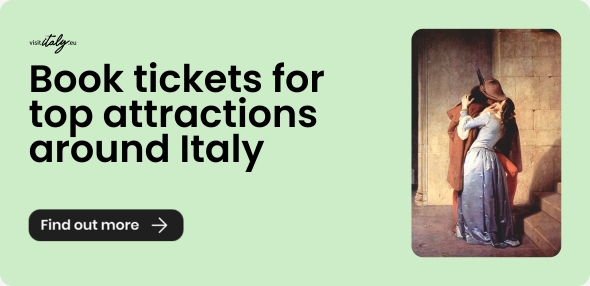
1. Archaeological Park of the Taurians and the early Christian crypt of San Fantino
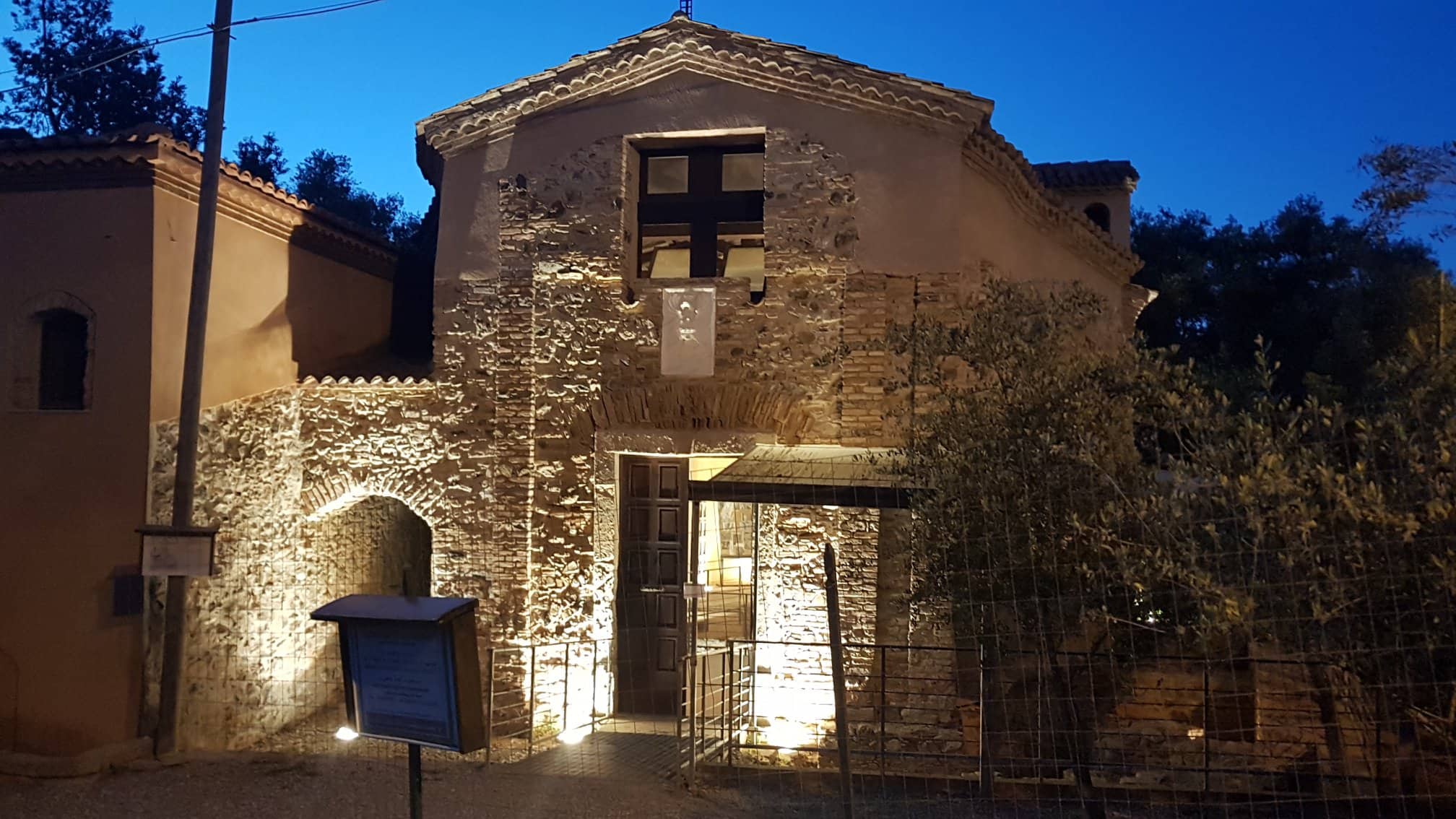
The " Antonio De Salvo" Archaeological Park of the Taurians is located in Palmi, in the area where the city of Tauriana (or Taureanum) once stood.
The park is about three hectares in size and is located on flat land overlooking the entire Viola coast.
Tauriana, in its long, ancient history, changed its name several times: the Italics called it Taurianum, the Romans Tauriana, the Byzantines Tavriana /Tavriano, then it became so identified with its eldest son, that for centuries it was called S. Fantino. At the beginning of the 20th century, on the initiative of the historian Antonio De Salvo, it took back its ancient name of 'Taureana'.
Archaeological research tells us of the ancient presence on the site of a civilisation older than Greece and Rome, to which it donated its laws and was the teacher of its first knowledge, the 'populus dei Tauriani', identifiable, in a wider historical-geographical location, with the Italic people of the Brettii (the rebels), who occupied what is now Calabria.
The structures found and highlighted within the park are the following:
- a proto-historic village dating back to four thousand years ago
- urban installations of the city of Tauriana (first Brettonian then Roman);
- public, sacred and private architecture such as the 'Mosaic House';
- the 'urban sanctuary', known to all as 'Donna Canfora's house';
- a Roman road passing through Via Popilia;
- a circular building for shows, which the historian Antonio De Salvo, in his work Metauria e Tauriana, had already imagined to be an amphitheatre at the end of the 19th century.
- The modern Saracen Tower is also part of the park.
2. Archeological Park of Capocolonna
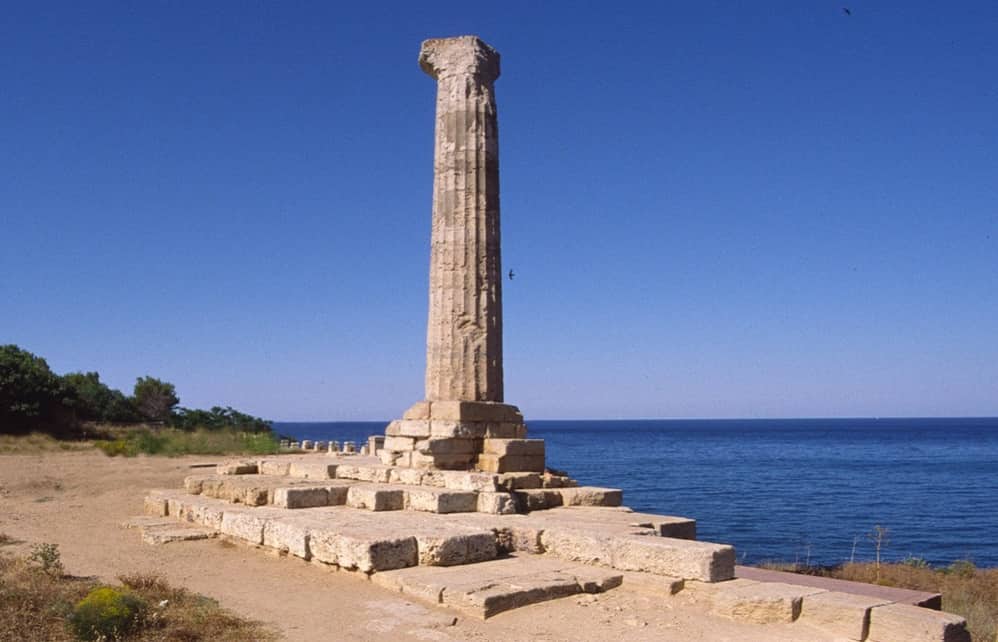
Known in antiquity as 'Lakinion akron', the Archaeological Park of Capo Colonna is located a few kilometres from Crotone and was created by the Superintendence for Archaeological Heritage of Calabria. The Park extends over 30 hectares of excavated land (circumscribed by walls from the Roman era) and another 20 hectares with woodland and Mediterranean scrub (sacred to Hera). In the archaeological area are the remains of the Heraion Lakinion, an extra-urban sanctuary of the Greek colony of Crotone.
A highly venerated place of worship, also known to have been frequented by Pythagoras, in the 5th century BC it became the seat of the Italiota League.
Capo Colonna is also linked to the figure of Hannibal, who left from here to return to Carthage.
The most important building of the sanctuary is the great Doric temple of Hera Lacinia with a rectangular plan of 6x19 columns and built around 470-460 BC. Traces of the temple's foundation pits and part of the eastern stylobate remain, with a single surviving column that has become the park's emblem. In the sacred area there are the remains of a more ancient place of worship from which come the precious votive objects of Hera's treasure, preserved in the National Archaeological Museum of Crotone.
The most important discoveries date back to the late 1980s and brought to light the Via Sacra and the buildings of the sanctuary, while in 2014 the important discovery of a Roman forum was made.
3. Archeological Park of Locri Epizephyrii
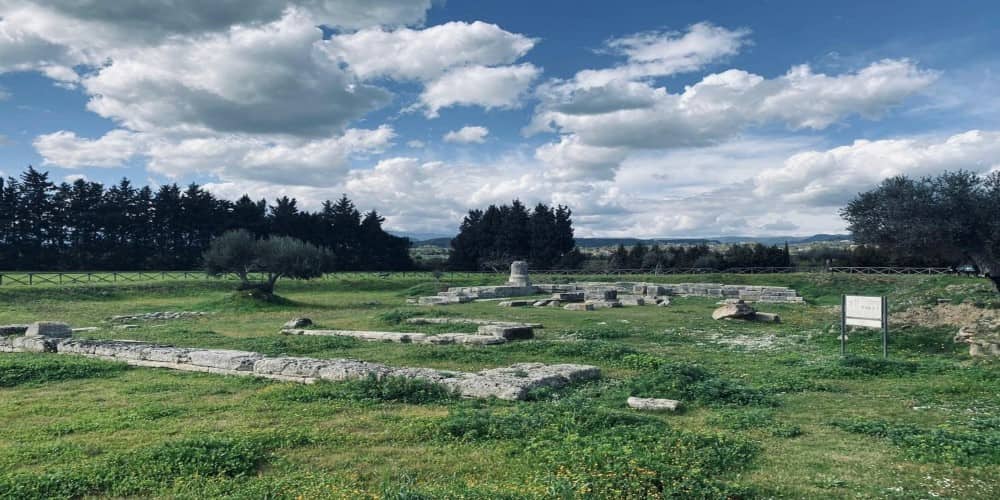
The Archaeological Park of Locri Epizefiri is located a few kilometres from the town of Locri. The city was protected by a 7 km long wall. Outside the walls are the necropolises, while most of the sacred areas are located close to the walls. The sanctuaries within the walls have monumental temple buildings and date back to the Archaic period. Among the temples found, the one in best condition is the Sanctuary of Persephone, defined by Diodorus Siculus as 'the most famous of the sanctuaries of southern Italy'.
The National Archaeological Museum of Locri Epizephyrii is located at the sacred area of Marasà where the ancient Locrian colony of Lokroi Epizephirioi was found. The museum has two floors: on the ground floor, finds from the archaeological excavations of the ancient Magna-Greek polis, while the first floor houses finds from before the Greek colonisation and dating back to the Iron Age.
4. Archeological Park of Scolacium
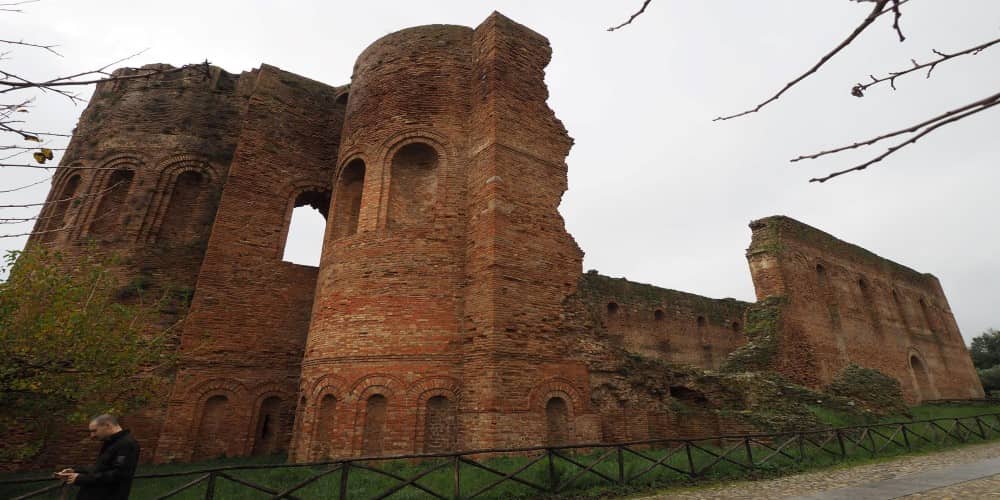
A city dedicated first to the goddess Athena, then to Minerva, the "Scolacium Park" of Roccelletta rises near the Marina di Catanzaro in the territory of the Municipality of Borgia, on the Ionian coast of the Gulf of Squillace.
The town of Squillace owes its current name to the ancient Scolacium also known as Scylletium and later, Minervium and Colonia Minervia.
Minervia Scolacium is the name of the Roman colony that was founded in 123-122 BC on the site of the former Greek town of Skylletion, north of Caulonia.
The Greek centre is mentioned by Strabo and has a foundation myth connected to the events of the Trojan War: it would have been founded by Ulysses, who was shipwrecked in that land.
The Roman Scolacium had a prosperous life in the following centuries and experienced a phase of remarkable economic, urban and architectural development. In the Byzantine age it was the birthplace of Cassiodorus.
Excavations have brought to light numerous archaeological finds such as buildings, ceramics and numerous headless statues from the Roman era dating back to at least the 8th century BC,)
at the beginning of the route we find an unfinished abbey, built by the Normans between the 11th and 12th centuries, probably used as a defence structure, called Roccelletta.
A unique coincidence today is the presence of hundreds of crows, recalling the myth of Athena, to whom the town is dedicated, and this black bird
5. Archeological Park of Sibari
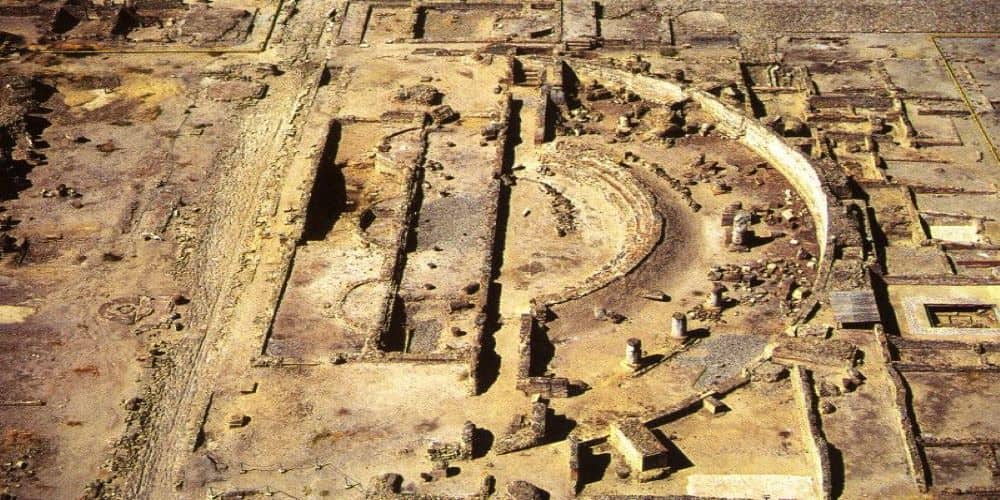
The Archaeological Park of Sybaris is located in Cassano all'Ionio, in the district of Sybaris. It is the site of one of the richest and most important Greek cities of Magna Graecia.
Finds from the excavations are kept in the National Archaeological Museum of the Sibaritide.
Sybaris was the first colony founded by the Achaeans on the Ionian coast of Calabria.
Sybaris and Kroton, the most important of Magna Graecia, got into a war in 510 B.C. and saw the defeat and destruction of Sybaris.
The area of the Archaeological Park is affected by the overlapping of the three cities that followed each other in the various eras.
Protohistoric settlements are evidenced by some sites in the area, such as Castiglione di Paludi, where there are the remains of an Iron Age necropolis, datable to the 9th-8th century BC.
The excavation areas investigated so far are those of the Parco del Cavallo, Prolungamento Strada, Casabianca, Stombi and Oasi sites.
In the 'Parco del Cavallos' area, remains from the Roman period have been found. It is a district organised in two large stalls and a theatre.
In the area of the "White House" there is a built up area from the 4th century B.C., with a circular tower.
"Stombi" shows an urban area with a mixed settlement, only partly rebuilt after 510 BC, with some foundations from the Archaic period, including a modest building, wells and kilns.
6. Archeological Site of Casignana
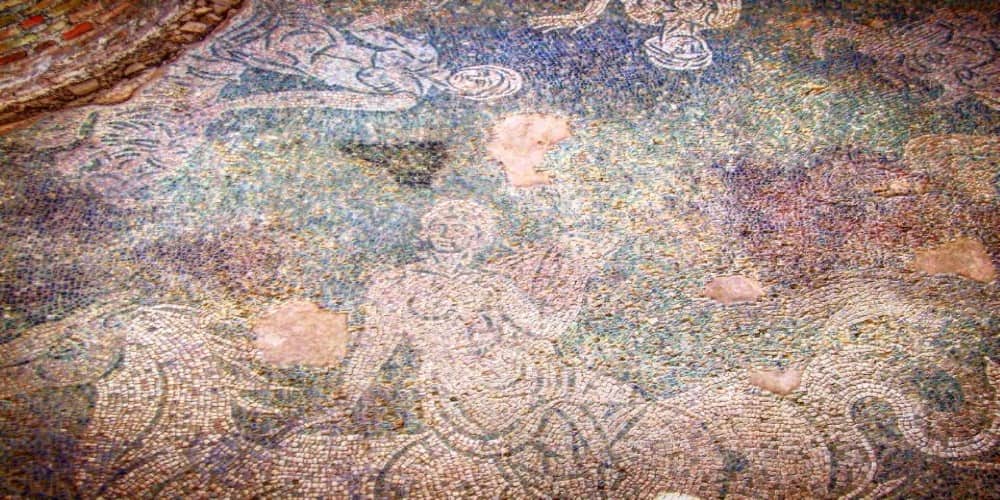
The Archaeological Area of Casignana is a 12-hectare Roman villa located in the municipality of Casignana (RC) in the province of Reggio Calabria.
In this archaeological site we can appreciate the structures of a large private Roman domus dating back to the 1st century AD containing the largest repertoire of polychrome mosaics known in Calabria.
The most important phase of the villa, whose original layout dates back to the 1st century AD, is that of a major renovation in the 4th century.
It is believed that the villa may have belonged to a very important patrician family, probably linked to the wine business. A resting place for officials of the imperial bureaucracy travelling from Locri to Reggio Calabria had also developed around it.
The rooms of a large private bath complex have been brought to light,
richly decorated with polychrome mosaics, including :
two octagonal rooms, a heated room (the calidarium) and a room with a more moderate temperature (the tepidarium) which served to prepare the body for the colder environment (the frigidarium). In the villa there is also a rectangular room.
In the large rectangular hall and in two heated rooms, opus sectile, a superfine technique using marble slabs, was used for the floor and for the lower part of the walls.
The calidarium, with hypocaust heating system and clay pipes on the walls, has an octagonal floor plan and mosaic flooring made of small tiles. The complex also includes a rectangular hall paved with coloured marble slabs.
The frigidarium, known as the Hall of the Nereids, dates from the 3rd century and depicts in large white and green tiles a marine thiasos with four female figures riding a lion, a bull, a horse and a tiger ending in a fish tail. The hall has an octagonal floor plan with four apsidal sides and two cold-water pools.
Upstream is a monumental nymphaeum with cisterns.
On the opposite side of the main road is the residential part of the villa, with rooms arranged around a large courtyard. There are still mosaic floors including the 'Bacchus Room' showing the god of wine in a state of drunkenness, supported by a satyr and other rooms including the 'Venus Room' and the 'Room of the 4 Seasons' and the 'latrines'.
7. Archeological Site of Castiglione di Paludi
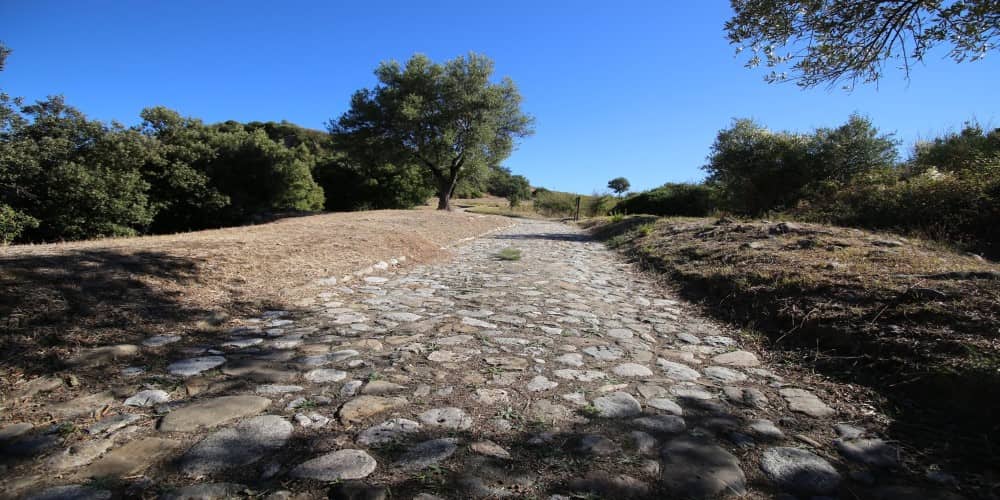
The archaeological site of Castiglione di Paludi is one of the most important and best preserved examples of military architecture in Magna Graecia.
A large human settlement dating from the 4th century BC, almost certainly related to a Brettonian city, has been investigated on the hill bounded by the Coseria and Scarmaci streams, in the archaeological area of Castiglione di Paludi. On the plateau in front of the settlement, 50 burials dating back to the 9th century BC had already been excavated, accompanied by weapons, iron and bronze spears, fibulae, decorated sheets and other objects. The area of Castiglione di Paludi could conceal the ancient Oenotrian city of Cossa, near which the Brettians later built their own city.
An Oenotrian town, known by the name of Cossa, appears in a fragment of Hecataeus of Miletus from the 6th BC and later Julius Caesar in De Bello Civili mentions a town named Cossa in the territory of Thourioi.
8. Archeological Site of Francavilla Marittima
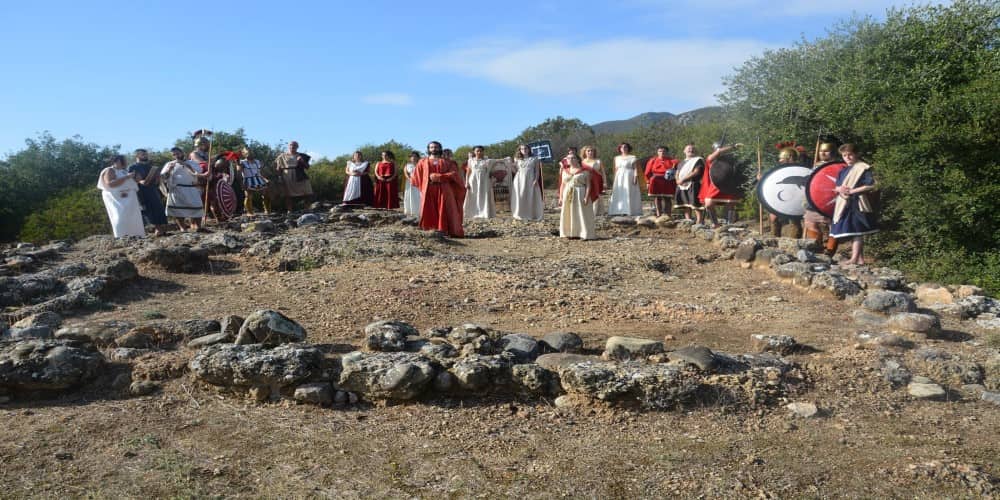
The archaeological area of Francavilla Marittima is about 14 kilometres away from the ancient Sybaris, there is a terrace called Timpone della Motta. The site is part of the municipality of Francavilla Marittima.
The archaeological site is very interesting as one of the most important precolonial indigenous settlements, founded by the Oenotrians.
The rich necropolis annexed at Macchiabate has made up for the scarcity of historical information about the Oenotrian village with its conspicuous archaeological finds.
9. Archeological Site of Monasterace Marina
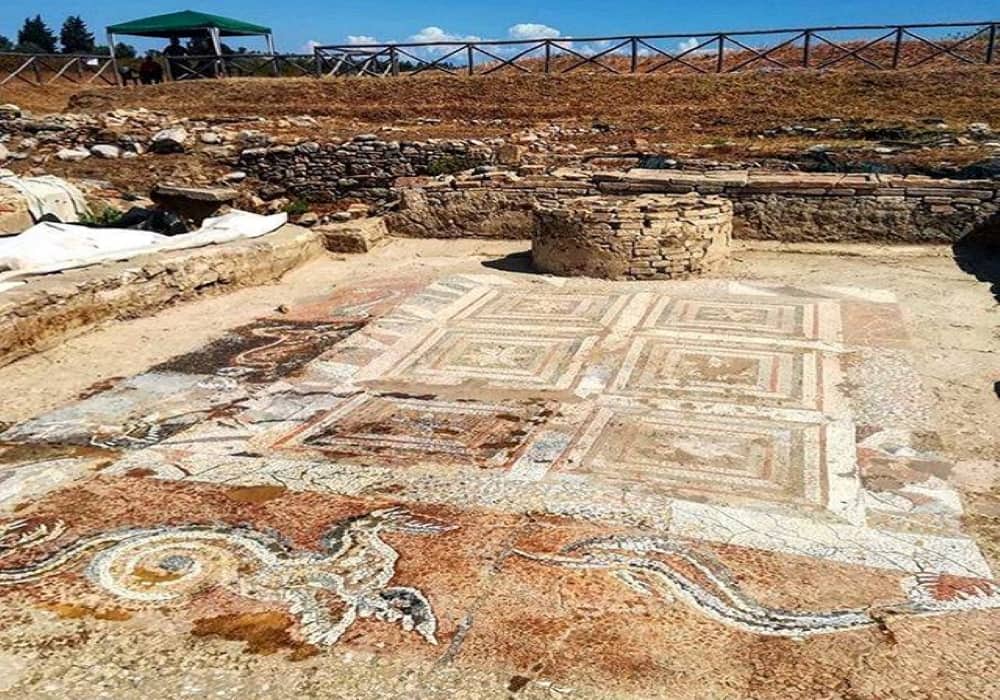
The identification of the ancient colony of Kaulon with the area between Punta Stilo and the town of Monasterace Marina is due to the archaeologist Paolo Orsi, who discovered the remains of a monumental Doric temple near the beach in 1890.
The archaeological area of Monasterace Marina is located around the large Doric temple. The archaeological site also includes some areas immediately outside the city walls.
It consists of both the Archaeological Park with the adjoining Museum on land, and the submerged archaeological area in the stretch of sea in front of the Park, where it is possible to dive into the Submerged Archaeological Site of Kaulon.
It consists of 7 rooms. The first one shows finds from the foundation of the city of Kaulon The second one displays the grave goods from the necropolis of the north-west area of Kaulon outside the walls with finds dating from between the 6th and the 4th century B.C., among them from production activities. In the third room there is material found in the sanctuary of Punta Stilo, including the bronze Tabula Cauloniensis, the longest Achaean written text in Italy dating back to the 5th century BC. In the fourth room there is a reconstruction of the enclosure and the Hellenistic baths of 'Casamatta'. The fifth room shows the remains of the houses in the San Marco area and the mosaic of the Dragon. The sixth room is dedicated to the reconstruction of a house from Kaulon, while the seventh room shows the reconstruction of the sanctuary of Passoliera, as well as pieces of columns from underwater finds.
The submerged archaeological site of Kaulon, on the other hand, is a formerly emerged area that is currently between 7.5 m and 5 m deep and is characterised by the presence of numerous worked and half-finished architectural elements. It consists of more than 200. The columns present are dated between 480 and 470 BC.
About the author
Written on 22/06/2021


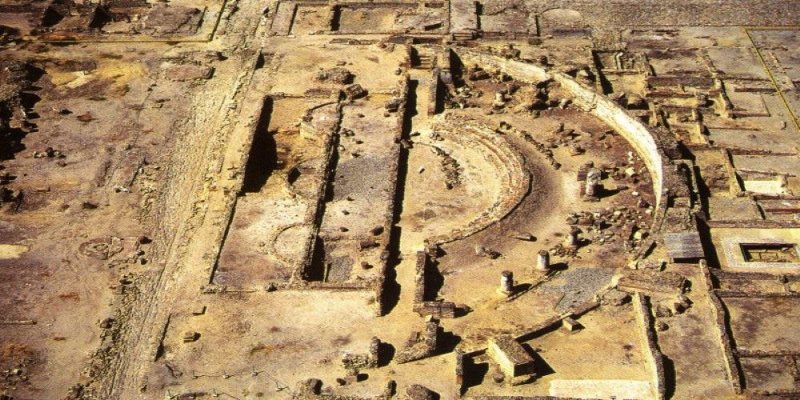
Antonio Magazzù
Greek colonists founded what was called Magna Grecia in Calabria, which became larger and more powerful than the mother cities in Greece.